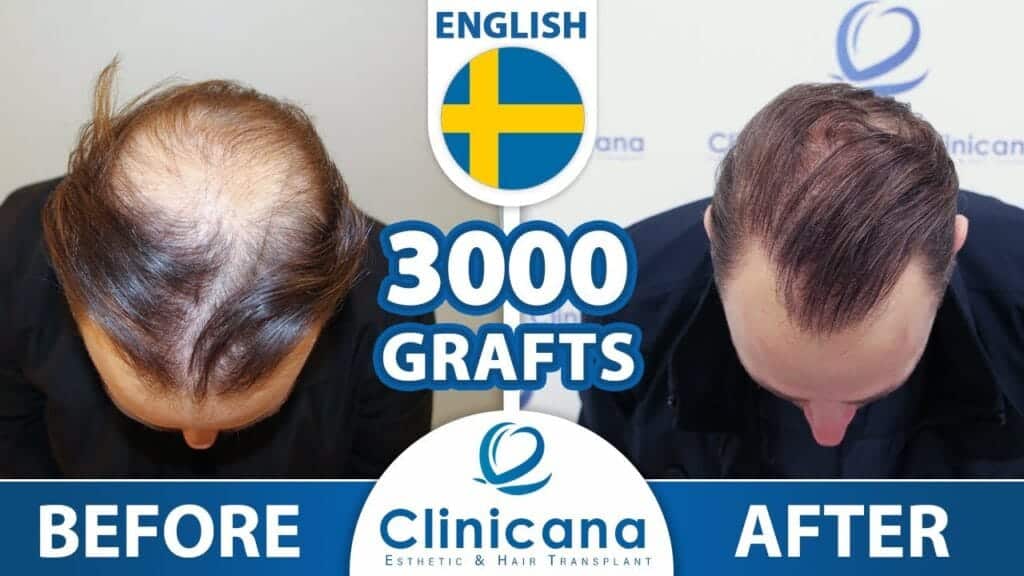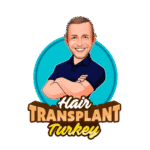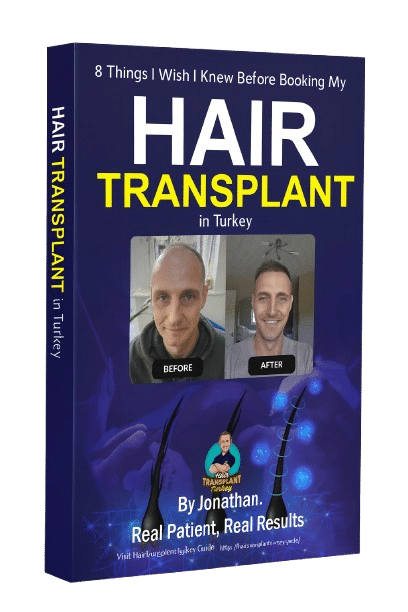When I decided to fly to Istanbul and undergo my hair transplant with Clinicana, I did so with plenty of hopes — and a fair amount of nerves. “Is it safe?” was the question I kept asking myself. In this article I’ll walk you through my journey — what I did, what I experienced, what I learned — and combine that with research and authoritative insight so you can assess whether it’s safe for you to get a hair transplant in Turkey.
You’ll see how regulation works in Turkey, how to choose a clinic, what to expect before/during/after the procedure, what risks exist, what benefits there are, and how to make the right decision. If you’re considering this step, you might also want to download my free guide “8 Things I Wish I Knew Before Booking My Hair Transplant in Turkey” at https://hairtransplantturkey.guide/ — it’s a helpful companion to this article.

Why Turkey Has Become A Major Destination For Hair Transplants
Turkey’s reputation as a hair-transplant hub is often justified — but understanding why helps you judge whether the location itself makes a difference for safety.
- Medical tourism: Turkey attracts large numbers of international patients for hair restoration, especially to cities such as Istanbul.Civas And Akpınar Hair Transplant Clinic+3Los Angeles Times+3estemedicalgroup.com+3
- Cost advantage: Because labour, facility and tourism-package costs are often lower, many international clients see Turkey as offering value.hairrestorationpittsburgh.com+1
- Experience volume: Many clinics in Turkey specialise in hair restoration and complete a high number of procedures annually.
- My personal context: I was drawn by the package Clinicana offered (flight, hotel, transfers, procedure) and the experience of location. But being attracted by cost and location doesn’t automatically mean it’s safe — that’s what I set out to verify.
Next we’ll look at how the safety and regulation landscape works in Turkey — which is critical if you’re going abroad for a medical procedure.
Understanding the Safety Landscape — Regulation, Accreditation and Standards in Turkey
Safety comes down to who is performing the procedure, how the clinic is regulated, and what after-care is provided. In Turkey these factors matter a lot.
Regulation & Licensing
In Turkey, hair transplant clinics must comply with national health regulations. For example:
- Clinics must be licensed by the Turkish Ministry of Health and operate as licensed health institutions.Esteworld+1
- On 1 July 2023 new regulations came into force requiring accreditation, limits on surgeries per day, team qualifications and so on.Hairline Transplant Turkey
- Patients should verify the surgeon is a specialist (dermatology/plastic surgery) and the clinic has the correct license.dk-hairklinik.com+1
Accreditation & Standards
- Accreditation by international organisations (e.g., International Society of Hair Restoration Surgery (ISHRS)) is a positive indicator.Estenove+1
- Facilities should have proper equipment, hygiene standards and transparent practices.Esteworld+1
- However, regulation and accreditation are only as good as the clinic’s adherence.
- In my case: Before booking with Clinicana I requested credentials, asked about the surgeon, saw their before/after photos, and confirmed the package included follow-up care. That gave me more confidence.
Mixed Reports & Caveats
- While many clinics in Turkey operate at high standard, there are also reports of clinics prioritising quantity over quality, using unqualified staff, offering extremely low cost packages and creating risk.UFP Hair Restoration+2Carolina Hair Surgery+2
- So simply choosing “Turkey” is not the safety guarantee — your clinic and surgeon choice matter more than country alone.
Now that you understand how the safety/regulation structure looks, let’s explore how to prepare yourself before travelling and before your procedure.
Pre-Procedure Considerations: What You Should Do Before Travelling / Before the Surgery
This is where a lot of potential problems can be avoided with good preparation. Here’s what worked for me and what you should check.
- Arrange an online consultation: I had a detailed video meeting with Clinicana, where we discussed donor-area status, what technique would be used (we decided on FUE), expected graft count, cost and hotel/transfer logistics.
- Clinic & Surgeon checks: I looked at the surgeon’s medical licence number, asked if the specific doctor would perform key parts of the surgery (extraction and implantation) rather than just having technicians do it. This is strongly advised.ABCS+1
- Understand what the package includes: My package included flight pick-up, hotel stay the night before and after surgery, first follow-up next day, medication for first week and remote follow-ups when I returned home.
- Travel & logistics planning: I scheduled the stay so I was in Istanbul a full 3 nights post-surgery to handle any immediate issues before flying back home.
- Pre-op assessment: At the clinic I had blood tests, donor zone evaluation, baseline photos and detailed consent forms. Turkish regulation says a medical examination must be done prior.Hairline Transplant Turkey+1
- Set realistic expectations: I was told that transplanted hair won’t appear full for months; the donor zone is finite; progressive hair loss might still require future procedures. Un-realistic promises were flagged.Hermest Clinic
Once you arrive for the procedure, knowing what to expect is helpful — so let’s go through the day of surgery and what happens during.
During the Procedure — What Happens & What to Expect
Here’s a breakdown of my experience at Clinicana and generally what any patient should know.
Procedure overview
- Technique: At my clinic I had the FUE (Follicular Unit Extraction) method. The surgeon extracted individual grafts from my donor zone (back of head) and implanted them into the recipient zone (front and crown).
- Duration: The day took around 6 hours including breaks, local anaesthesia, extraction, implantation, and post-op check.
- Team: The surgeon led the key stages; a specialised team assisted with graft sorting, microscopic preparation and implantation.
- I was awake under local anaesthetic and mild sedation; I could communicate with the surgeon about hairline design and positioning.
Safety & hygiene
- The clinic showed me sterilisation protocol, surgical room environment, and I observed the donor/recipient zones clearly—this reassured me.
- A major safety checkpoint: was the lead surgeon supervising the entire process and was their licence visible? I verified this. If you’re not seeing the surgeon or they delegate heavily to technicians, that’s a red flag.ABCS
- Immediately after the surgery I was transferred back to the hotel (which was near the clinic), given instructions, medications (antibiotic, pain relief, shampoo) and told when the first follow-up check would happen (next morning).
What you’ll experience
- Swelling: I had moderate swelling around the forehead and eyes 24–48 hrs after.
- Donor-zone soreness: Mild discomfort, but manageable with meds.
- The grafts were visible as tiny incisions; I was told not to touch or scratch the area.
- Sleep: I was given pillows to keep head elevated and told to avoid direct sun, heavy lifting and showers for 24–48 hrs.
By the end of the day I knew things had gone smoothly; but the real story unfolds in recovery. So next, let’s look at what happens after the surgery and how to judge safety & success.
Post-Procedure / Recovery — Aftercare, Results, How to Judge Safety & Success
The work doesn’t stop when you leave Turkey. The aftercare and long-term follow-up are just as important.
Immediate phase (first week)
- I followed instructions: gentle washing starting day 2, no sweating/exercise, avoid sun, avoid alcohol and smoking for a few days.
- My donor zone had scabbing; the recipient zone had some redness. This is normal. I compared my experience to what the clinic had told me.
- The clinic arranged a remote call from my surgeon 48 hrs after departure; they also gave me contact details if I had queries once I returned home.
Medium term (1–3 months)
- I experienced what’s known as “shock loss” – some existing hair shedding in the recipient zone, which the clinic said is expected.
- By month 3 I saw initial regrowth (fine hairs) which gave me confidence.
- The clinic asked for interval photos and I sent updates; they evaluated progress and reassured me.
Long term (6–12 months+)
- By month 9 I had a visible density improvement, natural hairline and donor-zone healed well. I still had slight thinness in one zone which the clinic said might need a follow-up in future – they had discussed this at the start.
- Safety check: I monitored for complications (infection, scarring, unnatural hairline or over-harvesting). None occurred in my case.
- I consider the procedure safe because no adverse events occurred and the results align with what was promised and agreed.
Potential complications & red flags
- Infection, excessive scarring, unnatural results, donor-area depletion are real risks — especially if clinic standards are low.Concord Hair Restoration+1
- After-care lapse: If you leave Turkey and have no support or contact with the clinic, that reduces safety margin.UFP Hair Restoration
- Legality and recourse: If something goes wrong, dealing with a foreign legal system is harder.Carolina Hair Surgery
Next, we’ll weigh the pros and cons so you can see risk vs benefit clearly.
Risk vs Benefit – A Balanced Perspective
Benefits I experienced
- Cost-effectiveness: My total package (procedure + travel + accommodation) was significantly less than comparable UK/EU clinics.
- Experience: Being abroad felt special; the clinic seemed highly experienced and well set-up.
- Motivational: The result has boosted my confidence and I feel I made a proactive step for my appearance.
Risks / things to watch
- Need for follow-up: If future hair loss occurs, donor area may become limited; you need long-term planning.
- Travel and follow-up logistics: travelling home shortly after surgery could avoid local check-in; I opted to stay extra days to mitigate risk.
- Variable quality among clinics: There is a wide spectrum of standards among Turkish clinics – some excellent, some poor. You must vet carefully.
- Legal/after-care support: If you have a problem months later, you may have to rely on remote support or pay for redo locally.
Who it’s right for and who it might not be
Good fit for someone who:
- Has stable hair loss (not rapidly progressive)
- Has sufficient donor area
- Is comfortable travelling abroad, staying after surgery, doing remote follow-up
- Prioritises value and is willing to do deep research
Maybe not right for if you:
- Have very advanced hair loss requiring complex reconstructive work
- Want all after-care locally or want immediate local surgeon access
- Are not comfortable with the idea of being abroad for surgery and follow-up
- Are drawn only by ultra-cheap offers (these often carry risk)
My verdict: For me, choosing a reputable clinic in Turkey was safe and worthwhile because I did the research, chose well, stayed for after-care and followed instructions. But I recognise the decision requires caution.
Next up: how you pick the right clinic in Turkey using a clear checklist.
How to Pick the Right Clinic in Turkey – Checklist
Here is a practical checklist you can follow to evaluate any hair transplant clinic abroad:
- Surgeon credentials: Confirm the doctor is board-certified (dermatology/plastic surgery), a member of ISHRS/IAHRS, and will perform the key parts of the procedure rather than handing over to technicians.
- Clinic accreditation & licence: Check the clinic is licensed by the Turkish Ministry of Health, has recent inspection reports, and follows the July 2023 regulations.Hairline Transplant Turkey+1
- Transparency: Review before/after galleries, ask for patient testimonials, examine how many procedures they do per day (low volume is usually better).
- After-care & follow-up: Ensure there’s structured post-op support, remote check-ins once you’re home, clear instructions and emergency contact.
- Package clarity: Know what’s included – flight, transfers, hotel, meds, follow-up. Very cheap offers that exclude many of these may mask extra costs or shortcuts in care.
- Communication & clarity: You should be able to ask questions freely, get detailed replies, have a consultation with the surgeon (not just sales rep). If you feel “sold to”, that’s a red flag.ABCS+1
- Legal and revision policy: What happens if you’re not satisfied? Is there a revision policy or support for complications? Understand terms.
- Your case matters: Donor area, hair texture, future hair loss progression — a good clinic will assess you individually and not just quote a flat price or “unlimited grafts”.Hermest Clinic
When I chose Clinicana I went through this checklist in depth and felt comfortable with their responses plus the personal meeting. I recommend you do the same.
FAQ’s & Common Concerns
Is travel and staying in Turkey for a few days safe for a medical procedure?
Yes, if you plan properly. Choose a clinic with good reviews, stay several nights post-procedure before flying home, and ensure you have local transfers and accommodation included.
Will I need treatment when I get back home?
Possibly. Many clinics advise medication or check-ups locally. Aftercare is essential for graft survival.
How do I know grafts will survive long-term?
There are no absolute guarantees, but survival rates in licensed Turkish clinics can range 85–95% under good conditions.en.dk-klinik.com.tr+1
What happens if I’m not happy with results?
Ask your clinic ahead of time about their revision policy, how they handle late-onset issues and remote follow-up.
What about super-cheap offers?
They are a red flag. Clinics offering “unlimited grafts” or extremely low costs might compromise care, use unqualified staff or skip proper follow-up.Hermest Clinic+1
Will my hair loss progress and make the transplant look sparse later?
Yes. A transplant doesn’t stop future hair loss in areas you did not treat. That’s why good planning (with donor area and future loss in mind) is essential.

My Personal Experience at Clinicana – What I Learned and Advice for You
I want to share some of my own observations because they might help you picture what it’s really like.
- Why I chose Clinicana: I compared several clinics; Clinicana offered a mid-price package, transparent graft count, airport pick-up, hotel included, English-speaking coordinator.
- Procedure day: Arrived morning, did final consultation with surgeon, hospital tour, pre-op tests, then surgery. I stayed in affiliated hotel that night; had first follow-up next morning before fly-out day.
- Recovery: First week I was careful with sleeping position, avoided exercise/sweating, followed shampoo instructions. Weeks 2-4 itching/peeling of scabs. At month 3 I saw early regrowth; at month 9 the density was good.
- What surprised me: Even with everything going well, I still worried about donor-area scarring and future loss. Good clinic communication helped.
- What I would change: I might have stayed one extra night in Turkey (I left on day 3 after surgery) just for extra assurance. Also I took more before/after photos than I did – I’d recommend you document everything.
- Advice for readers:
- Bring a copy of your medical history and clear donor-zone photos.
- Budget a buffer for unexpected things (extra hotel nights, slight complications).
- Insist on a clear contract: number of grafts, who the surgeon is, post-op policy.
- Stay in contact with the clinic after you return home (remote check-in is valuable).
- My verdict: For me it was safe — I had no issues, results are good, the clinic was responsive. But I attribute that to the homework I did and picking a clinic that met my criteria. It’s not an automatic safe choice just because you go to Turkey – your research matters.
Final Decision Matrix – How to Decide for Yourself
Use the following simple matrix to evaluate whether going to Turkey for a hair transplant is appropriate for you:
| Criteria | If “Yes” → OK to proceed | If “No” → Consider local option / wait |
|---|---|---|
| Do you have stable hair loss (i.e., slow or stopped progression)? | ✔ | ❗ Might need more complex work locally |
| Is your donor-zone in good condition? | ✔ | ❗ Outcome may be compromised |
| Are you comfortable travelling and staying abroad for a few days? | ✔ | ❗ Travel adds risk/complexity |
| Are you willing to stay extra days afterward for recovery? | ✔ | ❗ Risk of travel too soon |
| Have you identified at least one highly rated, accredited clinic and surgeon? | ✔ | ❗ Do more research first |
| Have you checked after-care and follow-up policy? | ✔ | ❗ Important to clarify |
| Are you not solely motivated by lowest cost, but by best value & safety? | ✔ | ❗ Beware of cost-only decisions |
If you answered “Yes” to most of the left column items, then Turkey could be a viable and safe option. If you tick many in the “No” column, consider having the procedure closer to home.
Conclusion
So — is it safe to get a hair transplant in Turkey? The short answer: *Yes, it can be safe — but only if you approach it with the right level of diligence. The country offers experienced clinics, competitive values and modern facilities. But the safety and result depend overwhelmingly on which clinic you choose, how you prepare, and what your after-care plan is.
In my case, I found the journey worthwhile: well-planned, executed by a reputable clinic, followed by structured after-care, and the results met my expectations. But for anyone else reading this, I recommend you treat it not as a bargain holiday but as a medical decision. Ask the tough questions, use the checklist above, download my free guide “8 Things I Wish I Knew Before Booking My Hair Transplant in Turkey”, and decide with clarity.



 Continue with Google
Continue with Google